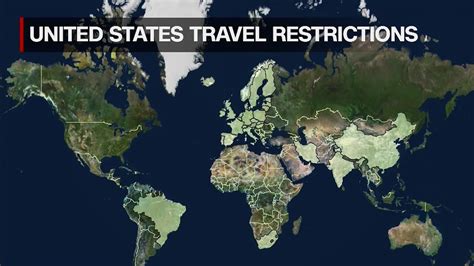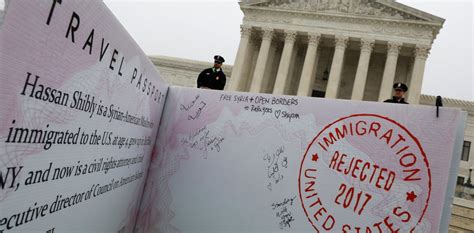Travel Bans In The United States

The implementation of travel bans in the United States has been a topic of significant debate and controversy over the years. These bans, which restrict the entry of individuals from specific countries or regions, have been enacted in response to various national security, public health, and economic concerns. The history of travel bans in the U.S. is complex, with multiple iterations and revisions, reflecting the dynamic nature of global politics, health crises, and economic conditions.
One of the earliest and most notable travel bans in U.S. history was the Chinese Exclusion Act of 1882, which prohibited the entry of Chinese laborers for a period of ten years. This act was the first federal law to restrict immigration based on nationality and marked the beginning of a long history of U.S. immigration policy influenced by racial, economic, and political considerations. Over the years, the U.S. has implemented various travel bans and restrictions, often in response to perceived threats to national security, public health, or economic stability.
Key Points
- The U.S. has a long history of implementing travel bans in response to national security, public health, and economic concerns.
- These bans have been the subject of significant legal and political challenges, with many arguing that they are discriminatory and ineffective.
- The most recent travel bans have been enacted in response to the COVID-19 pandemic and terrorist threats.
- The impact of travel bans on the U.S. economy, international relations, and individual rights has been substantial.
- Understanding the historical context, legal framework, and policy implications of travel bans is essential for evaluating their effectiveness and legitimacy.
Historical Context of Travel Bans

The historical context of travel bans in the U.S. is marked by periods of increased restrictions and relaxations, often reflecting the political, economic, and social climate of the time. The Immigration Act of 1917, for example, introduced the “Asiatic Barred Zone,” which prohibited immigration from a vast region of Asia and the Pacific. The Act of 1924, also known as the Johnson-Reed Act, established quotas for immigration based on national origin, favoring immigrants from Northern and Western Europe. These early laws set the stage for the complex and often controversial immigration policies that followed.
Post-9⁄11 Travel Restrictions
The September 11, 2001, terrorist attacks marked a significant turning point in U.S. travel policy, with the introduction of more stringent security measures and travel restrictions. The USA PATRIOT Act, passed in response to the attacks, expanded the authority of law enforcement agencies to monitor and regulate the activities of individuals and groups deemed a threat to national security. The creation of the Department of Homeland Security (DHS) in 2003 further centralized the management of immigration and travel policies, with a focus on preventing terrorist entry into the U.S.
| Travel Ban | Year | Purpose |
|---|---|---|
| Chinese Exclusion Act | 1882 | Restrict Chinese laborer immigration |
| Immigration Act of 1917 | 1917 | Establish "Asiatic Barred Zone" |
| Act of 1924 (Johnson-Reed Act) | 1924 | Establish national origin quotas |
| USA PATRIOT Act | 2001 | Expand national security surveillance |
| Executive Order 13769 | 2017 | Restrict travel from predominantly Muslim countries |

Legal Challenges and Controversies

The implementation of travel bans has been met with significant legal and political challenges. Critics argue that these bans are discriminatory, ineffective, and violate international human rights law. The legal framework surrounding travel bans is complex, involving a mix of statutory authority, executive discretion, and judicial review. The Supreme Court’s decision in Trump v. Hawaii (2018) upheld the travel ban enacted through Executive Order 13780, marking a significant milestone in the legal battles surrounding U.S. travel policy.
COVID-19 Pandemic Travel Restrictions
The COVID-19 pandemic has introduced a new era of travel restrictions, with the U.S. implementing various measures to control the spread of the virus. These have included restrictions on non-essential travel, enhanced health screenings, and mandatory quarantine measures for individuals arriving from high-risk areas. The pandemic has highlighted the need for coordinated international responses to public health crises and has raised questions about the balance between national security, public health, and individual rights in the context of travel policy.
What is the purpose of travel bans in the United States?
+Travel bans in the U.S. are implemented to address national security, public health, and economic concerns. They aim to prevent the entry of individuals who may pose a threat to these interests.
How have travel bans impacted the U.S. economy and international relations?
+Travel bans have had significant impacts on the U.S. economy, particularly in sectors reliant on international travel and tourism. They have also strained international relations, with many countries viewing these bans as discriminatory and counterproductive.
What legal challenges have travel bans faced, and how have courts responded?
+Travel bans have faced numerous legal challenges, with critics arguing they are unconstitutional and violate international law. Courts have responded with mixed rulings, with the Supreme Court ultimately upholding the authority of the executive branch to enact certain travel restrictions.
In conclusion, the history and implementation of travel bans in the United States reflect a complex interplay of national security, public health, economic, and humanitarian considerations. As the global landscape continues to evolve, it is essential to approach travel policy with a nuanced understanding of these factors, balancing the need to protect national interests with the principles of fairness, equality, and international cooperation.



